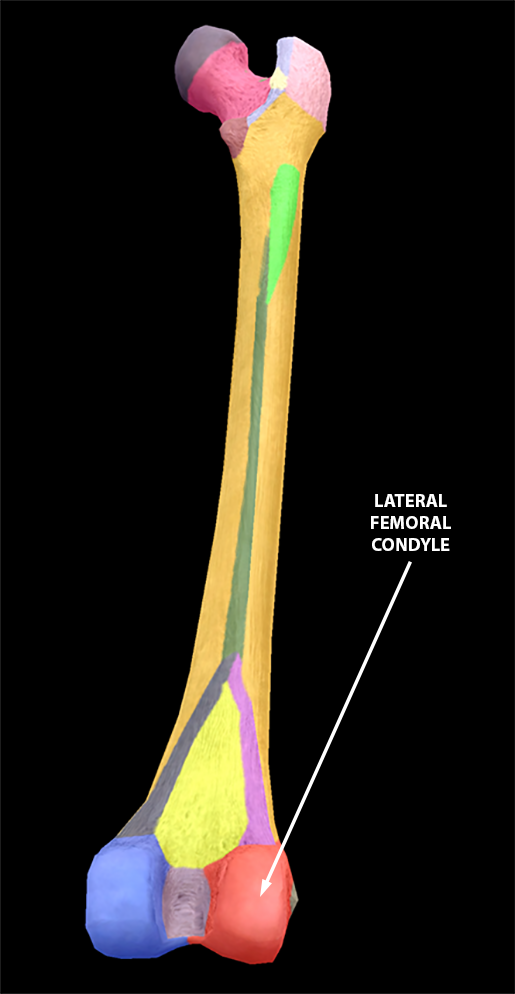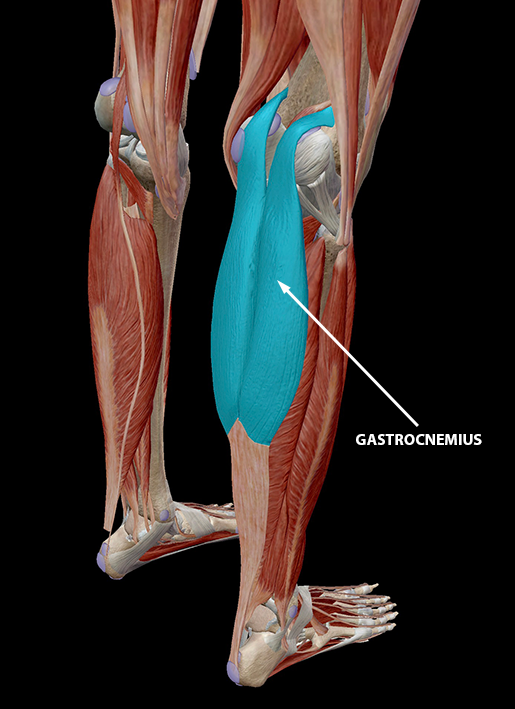Posted on 6/8/19 by Laura Snider
Did you know that 39% of people have an extra bone in their knee called the fabella? The fabella is a small sesamoid bone that sits behind the lateral femoral condyle, embedded in the tendon of the gastrocnemius muscle’s lateral head.
 Image from Human Anatomy Atlas.
Image from Human Anatomy Atlas.
Scientists aren’t actually sure what the fabella’s function is, but Michael Berthaume (part of the team that conducted a recent study looking at the prevalence of the fabella in various populations) has some ideas. He explained in an interview with Imperial College London that “the fabella may behave like other sesamoid bones to help reduce friction within tendons, redirecting muscle forces, or, as in the case of the kneecap, increasing the mechanical force of that muscle. Or it could be doing nothing at all.”
The fabella is frequently present in individuals with osteoarthritis of the knee, though having a fabella on its own doesn’t necessarily cause osteoarthritis (though it certainly can, as in fabella-femoral osteoarthritis). The presence of a fabella has also been linked to rheumatoid arthritis as well as several other conditions affecting the knee. Even on its own, the fabella can cause pain if it becomes dislocated.
Berthaume and his colleagues found that the presence of a fabella was about 3.5 times more common in 2018 than it was in 1918. So, why would a bone that can contribute to knee pain (and sometimes even has to be removed) become more frequently found in the world’s population over time?
The authors of the study suggest that better nutrition, resulting in increased muscle mass and longer bones, might be responsible. They argue that a combination of longer tibias with larger gastrocnemius muscles exerting a greater amount of force “could produce the mechanical stimuli necessary to initiate fabella formation and/or ossification.”
 Image from Human Anatomy Atlas.
Image from Human Anatomy Atlas.
In future studies, Berthaume and his colleagues intend to incorporate factors such as gender, age, and location into their analysis. They also want to see if people tend to have fabellae in both knees or in just one.
Want to learn more about knee anatomy? Check out these Learn Site and Blog pages from VB!
Be sure to subscribe to the Visible Body Blog for more anatomy awesomeness!
Are you a professor (or know someone who is)? We have awesome visuals and resources for your anatomy and physiology course! Learn more here.
When you select "Subscribe" you will start receiving our email newsletter. Use the links at the bottom of any email to manage the type of emails you receive or to unsubscribe. See our privacy policy for additional details.
©2025 Visible Body, a division of Cengage Learning